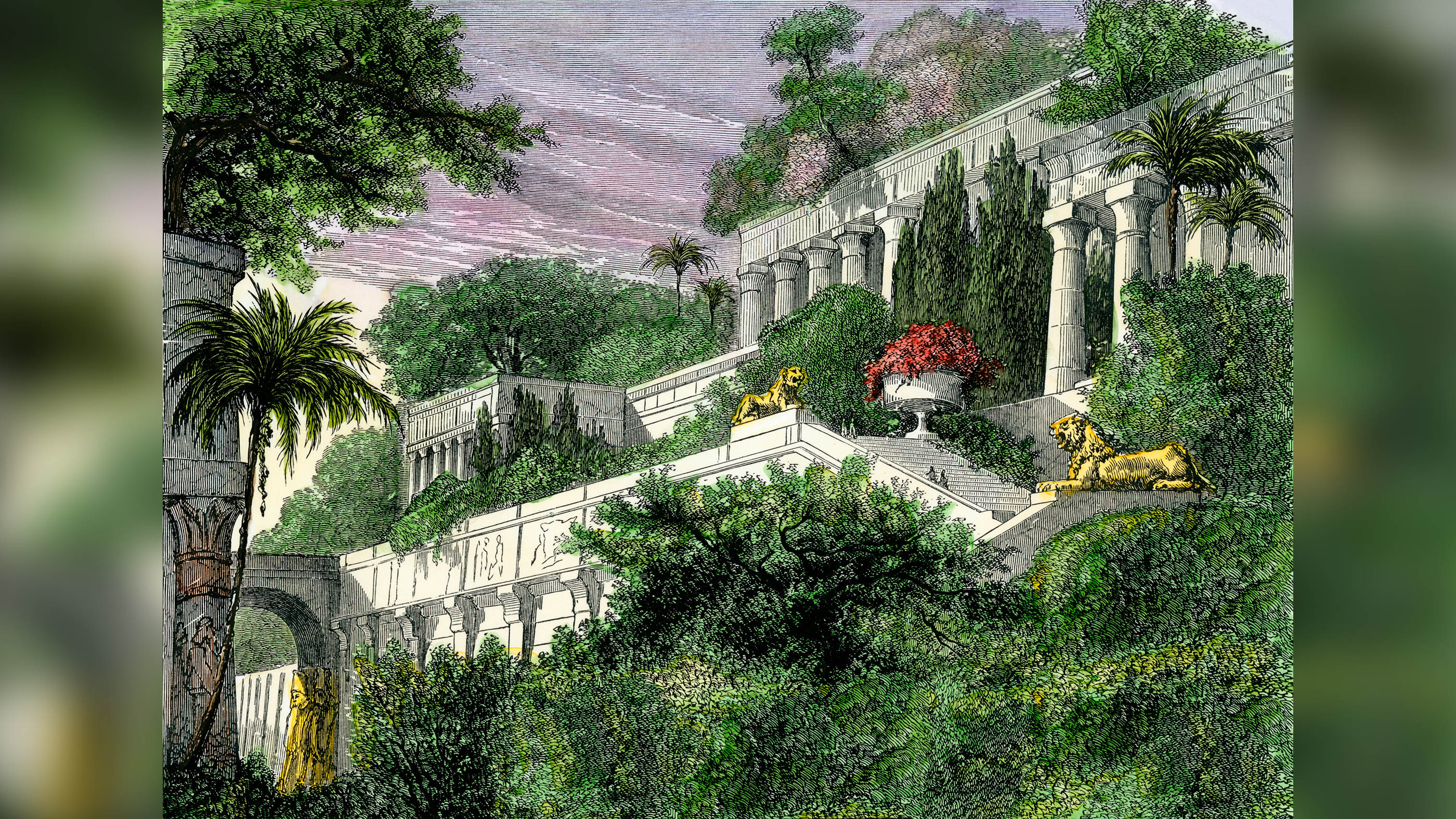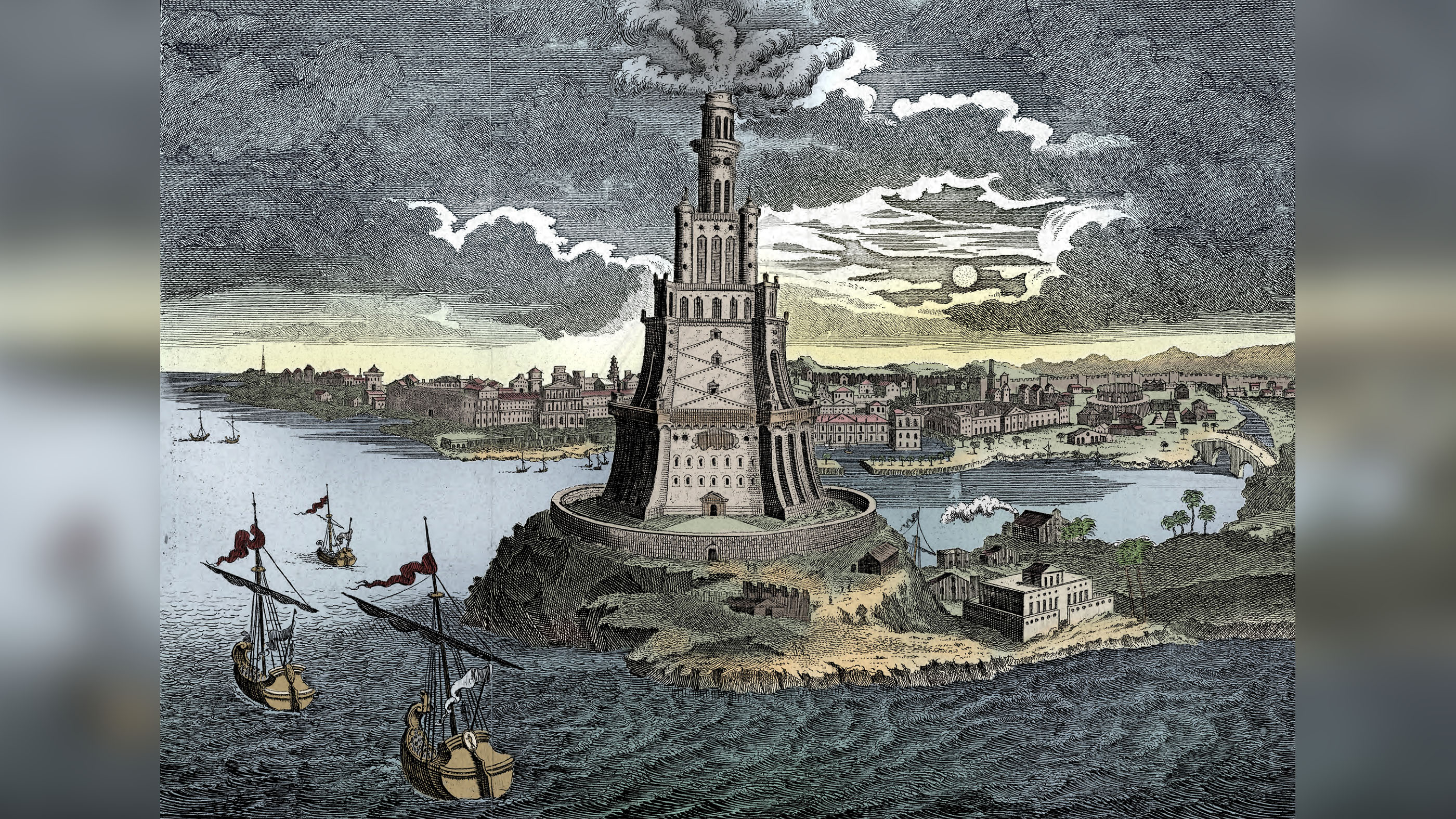7 wonders of the ancient world
From the Hanging Gardens of Babylon to the Pyramids at Giza, these ancient world wonders do not disappoint.

The seven wonders of the ancient world were a selection of exceptional pieces of architecture and works of art in the Middle East, North Africa and southern Europe.
A number of ancient and medieval writers from Europe and Middle East debated and described what are today called the seven "wonders" of the world (not all writers used the term "wonder" to describe them). The ancient Greek writer Herodotus, who lived from 484 to 425 B.C., was one of the earliest writers to discuss them, and while his writings on the wonders did not survive, they were referenced in later texts.
The wonders that should be included in the list were debated over millennia, with different authors proposing different sites. The list that we have today "only became fixed in the Renaissance," archaeologists Peter Clayton and Martin Price wrote in the book "The Seven Wonders of the Ancient World" (Routledge, 1988).
Here is a brief look at each of the seven wonders of the world.
The Great Pyramid at Giza, Egypt
The Great Pyramid at Giza is both the oldest ancient wonder on the list and the only one still standing today. It was built as a mausoleum for the pharaoh Khufu, who ruled over ancient Egypt nearly 4,600 years ago. It was the world's tallest structure until Lincoln Cathedral's central tower was completed in England in 1311.
The Great Pyramid was 481 feet (147 meters) tall when it was first completed, but today, due to the loss of some of its stones, it stands 455 feet (139 m) high. The interior of the pyramid contains a system of passageways leading to a "grand gallery" that travels up towards a room with an empty sarcophagus — often called the "king's chamber."
Additionally, the passageways in the Great Pyramid lead to two other chambers including what is sometimes called the "queen's chamber" (although it likely did not hold a queen) and a subterranean chamber located beneath the pyramid. The purpose of these two chambers is a matter of debate. In 2017 scientists scanning the pyramid also detected a large void above the grand gallery that could contain one or more chambers, while a 'hidden' 30-foot-long corridor was revealed above the pyramid’s north face entrance in 2023.
Get the world’s most fascinating discoveries delivered straight to your inbox.
The pyramids at Giza are part of a larger network of ancient burial sites dedicated to the ancient Egyptian rulers known as the Memphite Necropolis, an area recognized as a UNESCO World Heritage Site that also features sites such as Saqqara and Dahshur.
The Hanging Gardens of Babylon, Iraq
According to legend, the sixth-century B.C. Babylonian king Nebuchadnezzar II had a colossal maze of waterfalls and dense vegetation incorporated into his palace for his wife, Amytis of Media, who missed her lush homeland in Persia. However, archaeologists still debate whether the garden really existed.
The gardens were described by several ancient writers. "The approach to the garden sloped like a hillside and the several parts of the structure rose from one another tier on tier, the appearance of the whole resembled that of a theatre," the ancient Greek historian Diodorus Siculus wrote in the first century B.C.
Archaeological excavations at the site of the ancient city of Babylon, located 60 miles (100 kilometers) south of Baghdad in modern-day Iraq, have not succeeded in revealing a site that can be definitively identified as the Hanging Gardens. Additionally, there are no surviving Babylonian records discussing them. One theory is that Diodorus Siculus and other ancient writers got the location wrong, and the gardens were actually constructed at the Mesopotamian city of Nineveh, near modern-day Mosul in northern Iraq.
The Statue of Zeus at Olympia, Greece
Built around 450 B.C., the seated figure of Greece's chief Olympic deity was 40 feet (12 m). Made largely of ivory, it was constructed by the sculptor Phidias, it "showed Zeus seated but almost touching the roof with his head, thus making the impression that if Zeus arose and stood erect he would unroof the temple" the ancient greek writer Strabo, who lived from around 64 B.C. to A.D. 24, wrote.
The Roman emperor Caligula tried to steal it around A.D. 40. Caligula ordered that the statue of Zeus, and other famous statues of gods, should "be brought from Greece, in order to remove their heads and put his [Caligula's] own in their place," wrote Suetonius, who lived around. A.D. 69 to 122 . However, Caligula was assassinated before his orders were carried out.
It isn't clear exactly when the statue was destroyed. Ancient records show that in the fifth century A.D., Christianity was the official religion of the Roman Empire and traditional Graeco-Roman beliefs were being persecuted. It's possible that it was destroyed around this time.
The Temple of Artemis at Ephesus, Turkey
Built around 550 B.C. by Croesus, a king of Lydia, the Temple of Artemis at Ephesus was praised by ancient writers for its beauty. A smaller temple to Artemis, a goddess associated with animals and hunting, previously existed at Ephesus, but Croesus, who had recently conquered the area, greatly enlarged it, historian Michael Immendörfer wrote in his book "Ephesians and Artemis: The Cult of the Great Goddess of Ephesus as the Epistle's Context" (Mohr Siebeck, 2017).
It was set ablaze around 356 B.C., supposedly by a man named Herostratus who sought fame. It's questionable whether Herostratus actually burned the temple, Immendörfer wrote, noting that people may have been searching for a scapegoat, not wanting to believe that a lightning strike could have destroyed the goddess's temple. In any case the temple was rebuilt.
In A.D. 262 the temple was damaged by an earthquake and plundered by the Goths — a group of Germanic people who likely originated in Scandinavia — Immendörfer wrote. Whatever was left of the temple appears to have been abandoned or destroyed around the fifth century A.D., as Christian writers mention the end of the temple around that time.
The Mausoleum at Halicarnassus, Turkey
Built for Mausolus, a satrap of Caria in northern Anatolia who died in 353 B.C., this tomb made a strong impression on ancient writers and gave us the name "mausoleum." The Roman writer Pliny the Elder (A.D. 23 to 79) wrote that the building came about because a team of the finest sculptors at that time — Scopas, Bryaxis, Timotheus and Leochares — worked together on this project despite the fact they considered each other rivals.
When Artemisia, Mausolus' wife, died around 350 B.C., the mausoleum was incomplete, and it was uncertain whether the sculptors would continue to be paid. But despite this, the team pressed on. "They did not leave their work, however, until it was finished, considering that it was at once a memorial of their own fame and of the sculptor's art," Pliny wrote.
Pliny wrote that the building was 140 feet (43 m) tall and had a pyramid shaped base with 63 columns at the top. Remains of the mausoleum are still visible today, but they lie in ruins — the passage of time and reuse of stone for other buildings have gradually caused the mausoleum to fall apart.
The Colossus of Rhodes, Greece
The Colossus of Rhodes, an immense statue depicting the Greek sun god Helios, was constructed on Rhodes, an island off the coast of modern-day Turkey, around 280 B.C., and collapsed during an earthquake in 226 B.C. Nothing remains of the colossus today, and the exact location and height of the colossus are subjects of debate among scholars.
The statue itself may have been about 110 feet (34 m) tall and may have stood on a three-tiered column that was about 50 feet tall (15 m) tall, Robert Kebric, a retired history professor at the University of Louisville, wrote in an article published in 2019 in the Athens Journal of Humanities and Art. This would have given it a total height of 160 feet (49 m) Kebric wrote, after he analyzed descriptions by ancient writers.
While some modern-day artistic depictions imagine the statue straddling the harbor of Rhodes, Kebric wrote that a more likely location was on the apex of the acropolis on the island's main city. A number of temples and religious monuments existed in that location at the time, Kebric wrote.
The lighthouse of Alexandria, Egypt
Built on the orders of pharaoh Ptolemy II Philadelphus, who reigned from around 285 to 246 B.C., the lighthouse of Alexandria guided mariners into Alexandria in Egypt, one of the largest ports in the ancient world and which may have been built to align with the rising sun on the day of Alexander the Great's birth.
The lighthouse was built on the island of Pharos, located at the entrance to Alexandria's harbor. A causeway was created to connect the island to the mainland. The lighthouse had a mirror that reflected sun rays during the day, and a fire was set at night and at other times when it was necessary.
Estimates for the lighthouse's height vary, but it may have been around 400 feet (122 m) tall. The lighthouse was in use throughout the Middle Ages, but it collapsed in the mid 14th century, Doris Behrens-Abouseif, a professor at the School of Oriental and African Studies at the University of London, wrote in an article published in 2006 in the journal Muqarnas. Damage from a series of earthquakes and coastal erosion contributed to its collapse, although efforts were made throughout the Middle Ages to repair the damage.
Today, what's left of the lighthouse, along with a sizable portion of ancient Alexandria, lie underwater. Remains of the lighthouse were discovered by archaeologists in 1994, and studies of them are ongoing.

Owen Jarus is a regular contributor to Live Science who writes about archaeology and humans' past. He has also written for The Independent (UK), The Canadian Press (CP) and The Associated Press (AP), among others. Owen has a bachelor of arts degree from the University of Toronto and a journalism degree from Ryerson University.
 Live Science Plus
Live Science Plus











